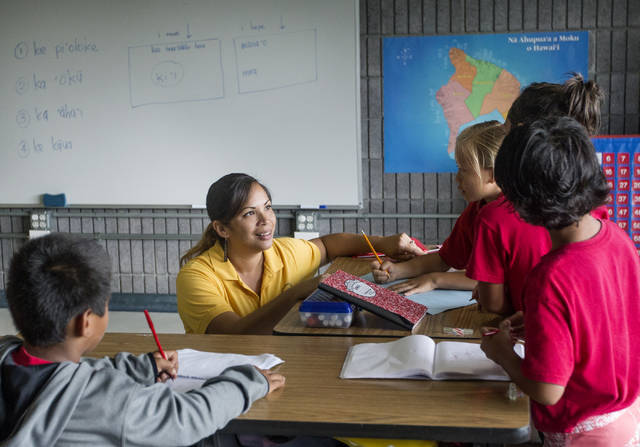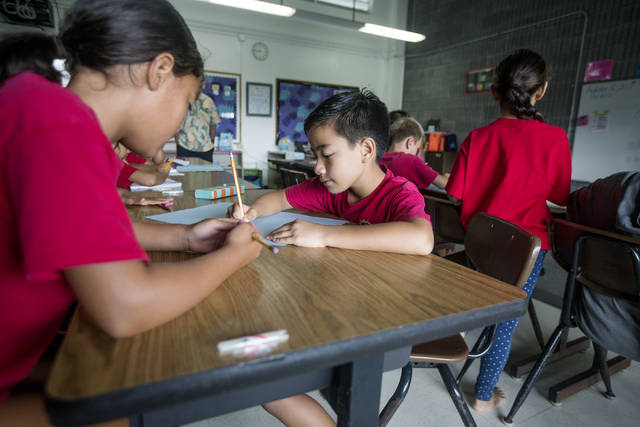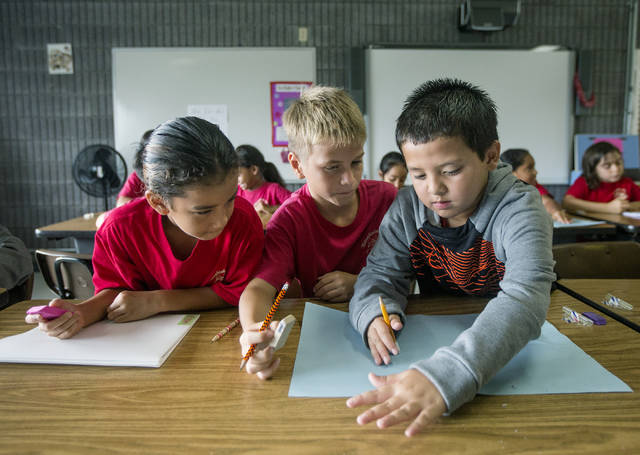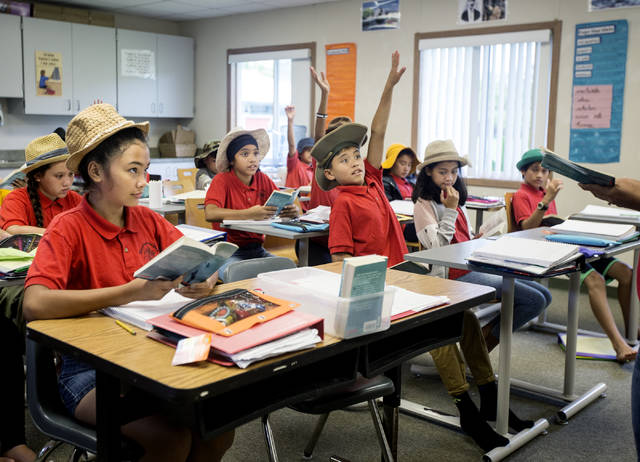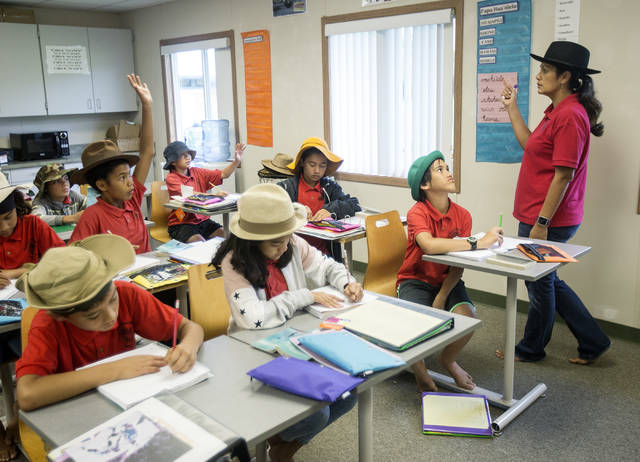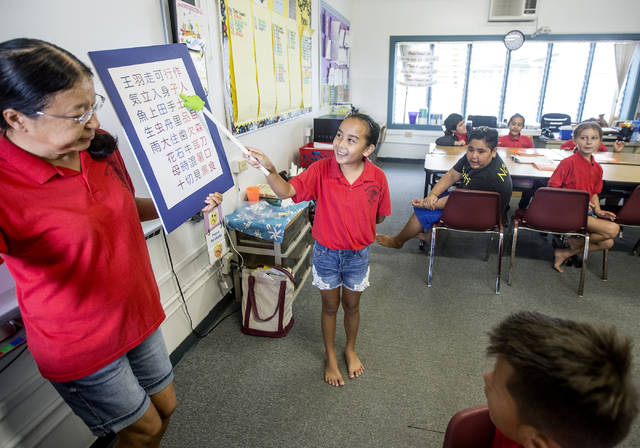KEAAU — It might seem far off now, but when 8-year-old Kaha‘i Helm graduates high school someday, he’ll likely have several languages under his belt. ADVERTISING KEAAU — It might seem far off now, but when 8-year-old Kaha‘i Helm graduates
KEAAU — It might seem far off now, but when 8-year-old Kaha‘i Helm graduates high school someday, he’ll likely have several languages under his belt.
Kaha‘i is a student at Ke Kula ‘O Nawahiokalani‘opu‘u, or “Nawahi,” a Hawaiian language immersion school in Keaau. Nawahi students are instructed entirely in Hawaiian through fifth-grade, when they take their first English language arts class. By the time they graduate high school, Nawahi aims for its students’ written and spoken English proficiency to be on par with that of their peers in English-language schools.
While many other Hawaiian immersion schools have a similar model, Nawahi also added a few other languages to the mix. Nawahi students take a Japanese language class from first through sixth grade. The school also teaches Latin to students in first through third grade. It wants to expand Latin instruction to fourth-graders next year.
“My favorite part is talking (in Japanese) and learning it,” Kaha‘i told the Tribune-Herald during a tour of the school campus last month. “We get to play games (such as) tic-tac-toe in Japanese. Everybody gets to learn. (It’s useful because) when we go off-island, we can speak Japanese and English, too.”
Last month, 12 Nawahi seniors were among the first recipients of the state Department of Education’s Seal of Biliteracy award for their proficiency in Hawaiian and English.
The seal is awarded to graduating seniors who demonstrate high proficiency in the state’s two official languages. It’s also awarded to students who demonstrate proficiency in either of the state’s two official languages and at least one additional language.
William Wilson, a Nawahi board member and a University of Hawaii at Hilo faculty member, said at the time that Nawahi students constituted the “largest group of awardees from a single high school.”
The vast majority of Nawahi students are of Hawaiian descent. About one-third speak Hawaiian regularly at home.
Every person at the Nawahi campus speaks Hawaiian, which also is the administrative language used in the school’s official staff meetings.
Wilson said Nawahi also is the largest Hawaiian immersion school on the island and among the largest in the state. It operates on the same property as the Punana Leo O Hilo preschool. Nearly all Punana Leo preschool graduates matriculate to Nawahi, Wilson said.
Nawahi enrollment has increased about 20 percent during the past two years. The school thinks that enrollment growth demonstrates increasing support from the community as well as for the Hawaiian language to be “developed as a home language again,” said Nawahi school director Kauanoe Kamana.
“If you come in at Punana Leo (preschool), we expect you have a vision for your child as part of a Hawaiian speaking community that lives in Hawaii here,” Kamana said. “Although you may travel or live in other places, you’re still going to have that calling to come back home and really give back to life here in Hawaii. So it’s that way of thinking about things which brings this whole biliteracy or having different languages be a natural part of that kind of thinking.”
While the elementary language program is “very strong,” Nawahi eventually would like to expand its language offerings into high school grades as electives, Wilson said. He said Nawahi experimented with teaching Chinese in the past but lacked the teacher and monetary resources to continue.
He said Nawahi eventually would like to be able to offer Portuguese, Tagalog or Ilocano.
“This is where we’re different than other (programs) that teach (several) languages,” Wilson said. “It’s based on their own identity. Not a single child here would be pure Hawaiian, they all have something else. And because of the Hawaiian thinking of ‘to honor your family and ancestors,’ you have a big job. So (the question is), how are you going to connect to them? The idea is to connect to all those people.
“With Hawaiian being the connector,” Kamana added.
Email Kirsten Johnson at kjohnson@hawaiitribune-herald.com.







